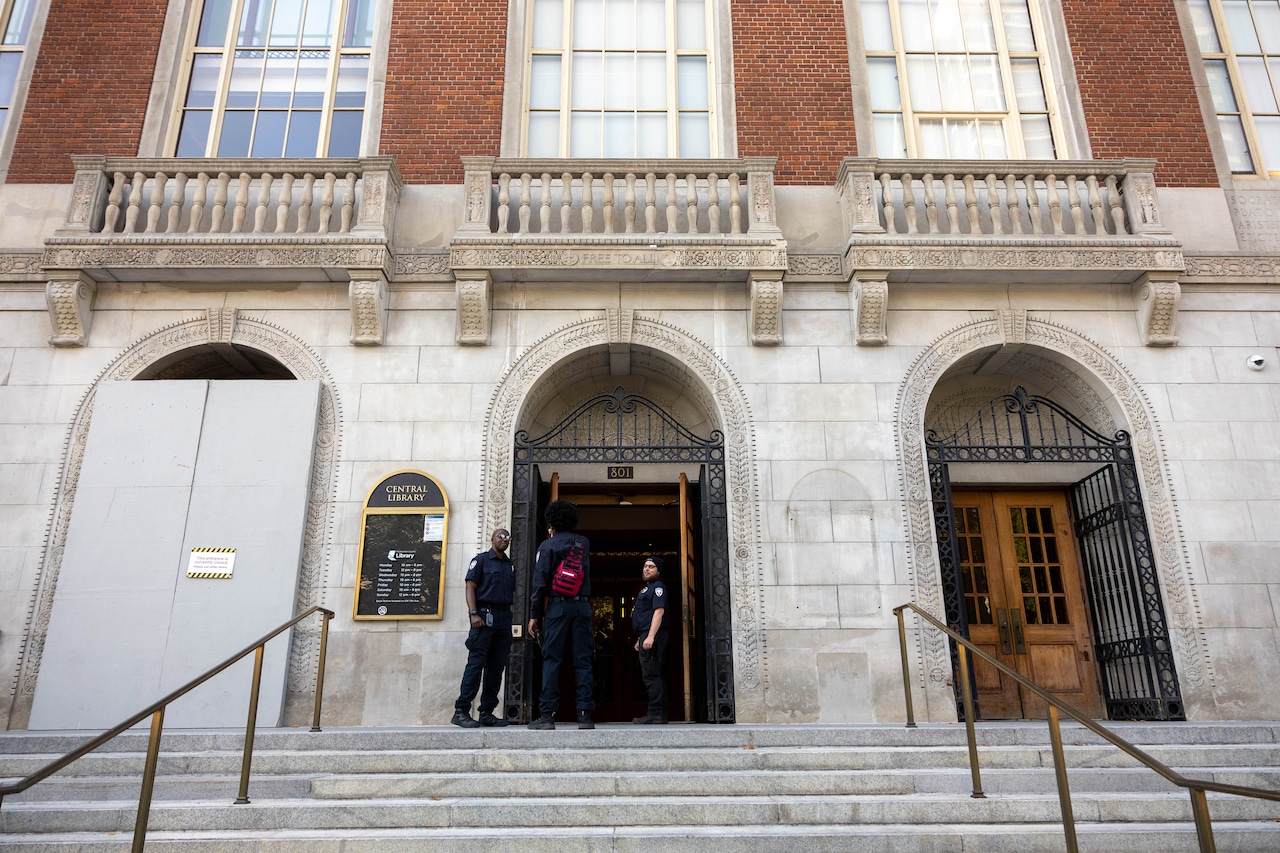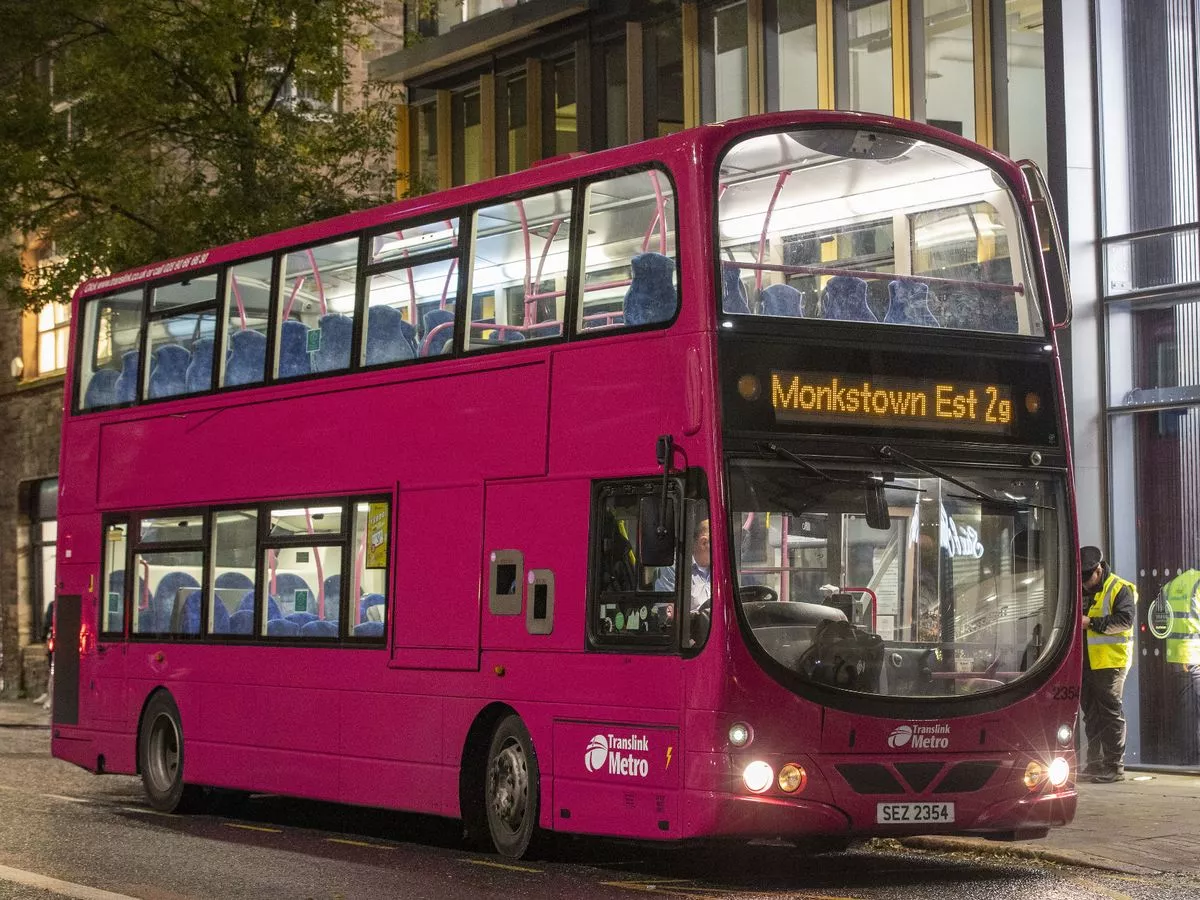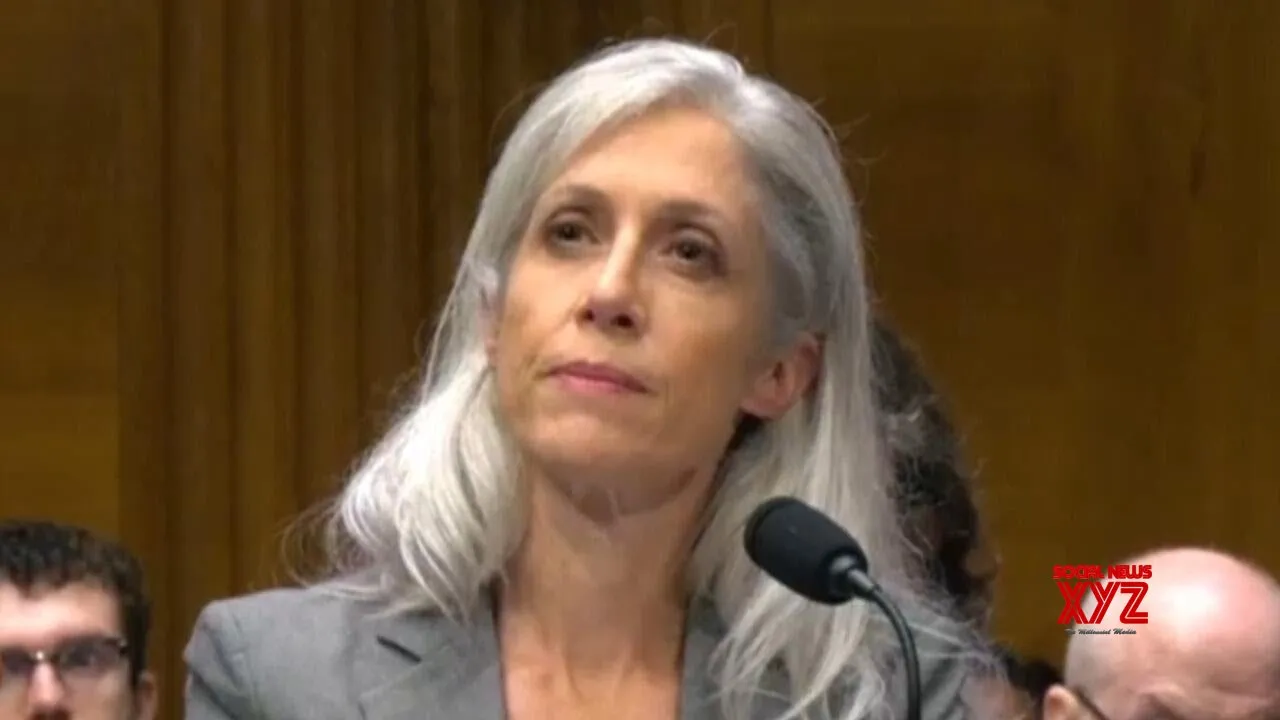Why this Portland library is a flashpoint in the debate over downtown safety, and what can be done

On a recent Friday afternoon, children and parents attended a playtime event in the vibrant first-floor youth section of Portland’s Central Library. Meanwhile, a pair of medical responders carried a stretcher up to the third floor to assist an adult in crisis.
Elsewhere, a patron lamented to a librarian about their lack of culinary talent while picking out a new cookbook. A man sitting on a bench outside the bathroom changed his clothes in the open. Security guards stood stationed on every floor. More patrolled outside, along with an employee, who picked up litter.
It was a typical day at Multnomah County’s flagship branch, which has increasingly been called on to serve dual roles as both a central information hub and a stopgap refuge for people experiencing homelessness in a city where such spaces are scarce.
It has also recently become a flashpoint in debates over downtown safety following two violent incidents outside its doors. Local leaders are now mulling significant changes to security protocols at the library that the county Board of Commissioners will take up later this month. That discussion has raised deeper questions about how the library serves its community and how changes could reshape its relationship with the public now and in the years ahead.
Librarians have already had to adapt to increased demands, becoming more than just stewards of information but also social workers and rule enforcers, Director of Libraries Annie Lewis said.
“We’ve had to evolve,” Lewis told The Oregonian/OregonLive. “Both in the sense of the tools that people access to get the information they need and the people we serve.”
The downtown library is the county’s most visited, and also one of its most challenged, accounting for a disproportionate share of rules violations tracked by the county, data shows. The branch has struggled with drug overdoses and fentanyl use in and outside the building. Librarians there and elsewhere have reported feeling unsafe at work in the past.
The situation intensified in July after a deadly shooting outside the branch put it under increased scrutiny. County and city officials bickered and blamed one another for the fatal confrontation between two people who had left the library just moments before, while powerful business interests framed the shooting as a county failure.
A stabbing near the building a month later added fuel to the fire and reignited tensions between county and city leadership.
Now officials from both governments are considering their options and trying to work together to tackle deep-rooted problems that span beyond the library’s doorstep.
“The library’s top concern is the safety of our staff, our patrons and our neighbors,” Lewis said.
‘A place for everyone’
The library’s primary mission is to provide easy access to information, whether by the web or hardcover, Lewis said. But it is also uniquely positioned as one of the few spaces in the city’s downtown where everyone is welcome, regardless of their housing status.
“We have served folks that are unhoused for decades and decades,” Lewis said.
With a lack of capacity at day centers and sparse access to public restrooms to serve the more than 7,500 people who live without shelter in Multnomah County, many homeless people flock to the Central Library to access clean drinking water, use the bathroom or find a comfortable, air conditioned space to sit on hot summer days. Many also come to use the internet to answer emails and “plan their next steps,” Lewis said.
The library provides specialized training to its employees on how to connect homeless people with other services, de-escalate tense situations and work with people on the verge of a crisis, Lewis said. The central branch also partners with Cascadia Health, which has mental health professionals and peer support specialists on site for more complex situations.
Since starting at the Central Library in 2022, staff member Kelly Harrison said she’s found herself helping people from all walks of life, some battling with chronic and complex problems.
“I have somebody very close to me that struggles with drug and alcohol addiction,” Harrison said. “We see a lot of people like that, and it felt like an opportunity. That’s how I approach it, this could have been somebody in my life.”
Although she hadn’t anticipated serving people navigating those challenges would be such a big part of her job, she said Portland isn’t the only place seeing a shift in the role libraries play.
“In most major cities, the library systems are changing,” Harrison said.
But the Central Library can only do so much. It doesn’t provide necessities like food or showers and can’t help people with severe mental illness or those who are struggling with drug use. Both of those issues were exacerbated by the COVID-19 pandemic, putting greater strain on the library.
“People are presenting with needs the library may not be equipped to meet,” Lewis said.
Commissioner Meghan Moyer, whose district includes downtown Portland, said the city badly needs more day shelters and behavioral health resources. She also chastised the city for not opening more public restrooms. There are only about 116 publicly maintained restrooms in Portland, a February analysis by The Oregonian/OregonLive found, including those in libraries.
“Our restrooms, particularly the first floor, have become a place where people are not just using a restroom, but people are basically trying to bathe themselves,” Moyer said. “That is fundamentally outside of the scope of what a library is for. I think it is not acceptable that our houseless population cannot find restrooms.”
There are several day centers in downtown Portland, some of which specifically serve youth or women. The county’s own Behavioral Health Resource Center has a day center where people can do laundry and connect to the internet. Portland Mayor Keith Wilson has also pledged to open four new day centers. One, dubbed the Oasis, recently opened outdoors in Old Town with space for 200 people.
However, Scott Kerman, executive director for social services nonprofit Blanchet House, said the facilities currently open are at capacity nearly every day. The library being so widely accessible makes it an easy option for people who can’t find a spot elsewhere, he said.
“There’s just not enough open spots to serve everyone, and not every space is the right space for every person,” Kerman said.
Kerman acknowledged the real and pressing safety concerns facing the library, and said that while many homeless people use it peacefully, persistent and severe behavioral health problems have become more prominent.
But he cautioned officials against making drastic changes to the Central Library that would detract from its presence as a “sheltered and kind” space to the patrons walking through its doors.
“I think we would all grieve a future where the library is no longer that space,” Kerman said. “So perhaps the question we need to be answering is, what is it that we could do that would make this a safe and appropriate experience for everybody?”
Chronic safety challenges
The county’s flagship branch has struggled with crime and drug use in recent years, with some elected officials calling it a hotspot for illegal activity.
Last year there were 470 calls made to 911 for incidents in or on the Central Library’s premises. The library is set to outpace that number this year, with 421 calls logged as of Sept. 10, including 19 involving an overdose and 16 for reported assaults, according to data from the city’s Bureau of Emergency Communications.
The library also tracks rule violations that occur on its premises, from minor issues such as sleeping in the library to serious offenses like engaging in sexual misconduct or brandishing a weapon.
From January to July, there were 2,594 rule violations across the county’s 20 library locations, which includes library buildings and the operations center. Nearly 78% – or 2,021 – occurred at the Central Library. Many of those were for trespassing after being excluded from the library, Lewis said. A person may be flagged for multiple rule violations at one time.
The challenges come as the Central Library is seeing more people walk through its doors.
Over 135,000 patrons visited the library between February and June 2024, after the branch reopened following a $15 million renovation. Traffic then reached closer to pre-pandemic levels between July 1, 2024, and June 30, 2025, with 415,000 patrons perusing the shelves, more than any of the county’s other branches, according to library data.
The second-highest trafficked library was the recently closed Hollywood branch, which saw nearly 280,000 patrons in the 2025 fiscal year before shuttering for renovations in June. The Hollywood Library logged only 56 violations in that time.
To address security concerns, county officials brought in a consultant to help it make safety upgrades as part of the recent renovation of the Central Library. Among them, the county opted to shorten book shelves to improve sight lines for staff and made it easier to see into community rooms.
Despite those efforts, some business owners and people in the area have criticized the county for the conditions around the library. Wayne Pykonen said he’s watched the area’s steady decline in the eight years he’s worked across the street.
“I wouldn’t want to bring my kids to this neighborhood at all,” Pykonen said. “I’m glad some people find it safe, but that’s not my experience.”
Lewis said that the issues the downtown library faces are not isolated and speak to bigger challenges about safety that are out of the library’s control.
“The systemic challenges we face are not the responsibility of the library,” she said. “We did not create the security issues that are downtown.”
Violent events prompt talks of overhaul
On July 1, 50-year-old Douglas Ivers was shot and killed near the Smartpark on Southwest 10th Avenue and Yamhill Street in broad daylight.
The suspect, identified as 26-year-old Hassan Muse, and Ivers were seen on surveillance video inside the library shortly before the deadly confrontation.
The tragic incident led to a cavalcade of scrutiny for the downtown library and county officials. City officials put the onus on the county, with the mayor saying the fact the shooting occurred on the street and not inside the library “was a matter of chance.”
Moyer said library staff and security are not responsible for what happens beyond the library property and argued there was little that could have been done by the library to prevent the shooting.
In the end, both governments formed a task force to address safety concerns. The group includes Robert King, chief of staff to Portland Police Chief Bob Day, the city’s Director of Community Safety Stephanie Howard, Lewis and the county’s Workplace Security Director Dorothy Elmore, among others. They will deliver recommendations on next steps to the county Board of Commissioner at the end of the month.
In the meantime, the county heightened security at the branch, adding three more security officers, limiting Wi-Fi access after hours to prevent people from loitering outside the building and adding 24-hour security cameras outside.
Portland police also upped bike squad patrols in the blocks around the building, police said.
But questions about safety once again rose to the forefront in August after a 44-year-old man was stabbed three times outside the library following a confrontation with a group of young people who were sitting on the library’s benches.
The attack drew a strong reaction from Portland Metro Chamber President Andrew Hoan, who blamed county Chair Jessica Vega Pederson for the unsafe conditions.
“Persistent inaction by the chair has been a direct contributor to these tragic incidents and the conditions that have enabled them,” he wrote in a statement.
Lewis said the library has taken appropriate measures to address safety on the perimeter. Video footage from the stabbing shows security and library staff trying to intervene before the group and the man crossed the street, where the stabbing occurred. Once the group left library property, county security officers were not authorized under county rules to act further and had to wait for police.
“Librarians are not law enforcement,” Lewis said. “We can report illegal behavior, we can contact law enforcement, but we need the response of law enforcement to address criminal behavior, whether that’s inside or outside the library.”
Portland police made several recommendations to the library after the July shooting, suggesting that the library give oversight for security over to the Sheriff’s Office, install metal detectors and reduce Wi-Fi signal outdoors. Police have also increased enforcement in that sector of downtown, despite what they describe as limited resources to do so. Lewis said the Sheriff’s Office does not have staff available to handle library security.
“Portland Police Bureau sincerely hopes that these recommendations are helpful in moving all of us, city and county, toward an effective strategy,” the bureau said in a statement in July.
Librarians push back
As they await recommendations from the task force, county officials are now considering more stringent security measures, including the addition of metal detectors, an overhaul that some staff and elected officials worry could have a negative impact on library patrons.
Rough estimates show a weapons detection system and staff to man it could cost upwards of $750,000 per year, Lewis said. Installing metal detectors would require a vote from the board and new policies to comply with state law on authorized administrative searches.
It could also create a barrier for homeless individuals, who often bring their belongings with them into the library, Lewis said.
The recommendation to add metal detectors was met with strong opposition from some staff at the Central Library. In an email to the Board of Commissioners in July, over a dozen employees said that such measures would only promote a “sense of unsafety while reproducing profound inequities.”
“We are writing to state our resolute opposition to the securitization that is currently underway at Central Library,” the email said.
The library has been “subject to unrelenting scrutiny and salacious portrayals,” the email added. Staff argued that the number of violent incidents are extremely rare given the high foot traffic, and that county leadership has done little to defend the downtown branch.
“Disappointingly, the county has not intervened in this scapegoating, allowing responsibility for failures in health, housing, and policing policy at all levels of governance to be recast as the leadership failure of our director, and as the moral failure of the most marginalized and stigmatized patrons of our library,” staff wrote.
Staff demanded additional training provided by people with lived experience being homeless, better communication between employees and security officers and a seat at the table in making the next decisions on safety.
Lewis said the proposal for metal detectors wasn’t made lightly, particularly since she said most people who use the library are peaceful and cooperative. She said she has consulted with library directors across the country who have reported mixed results with metal detectors.
“This is a significant measure,” she said.
The library will also be temporarily removing its outdoor benches for scheduled construction, Lewis said. Lewis said the benches are expected to return when construction is done, but officials will monitor the impact to weigh whether removing them would improve conditions.
The board will take up proposed safety measures on Sept. 30 when the task force delivers its recommendations.
Daniel Arca, who currently serves as one of the downtown library staff members in charge of coordinating with security, said the library remains a positive place for people to connect and be a part of a wider community. He believes it also serves a crucial role in aiding the city’s most vulnerable.
“When I first started here, I didn’t think that would be something I’d necessarily be interested in doing or even think that would be a role of the library,” Arca said. “But I figured, if not the library, then where else are we going to be engaged with every member of the community?”



